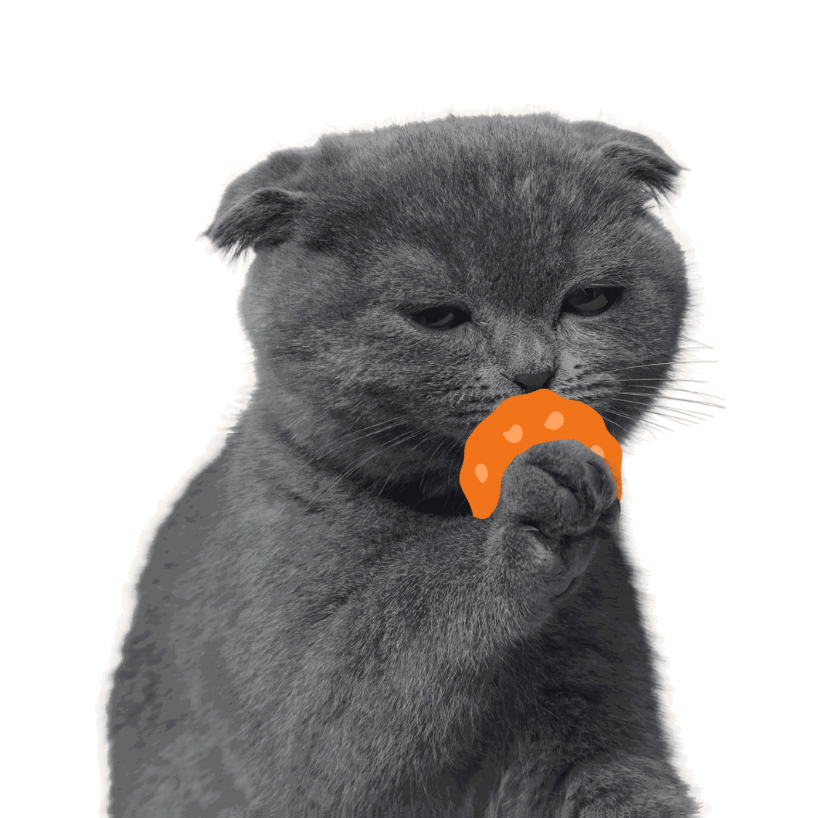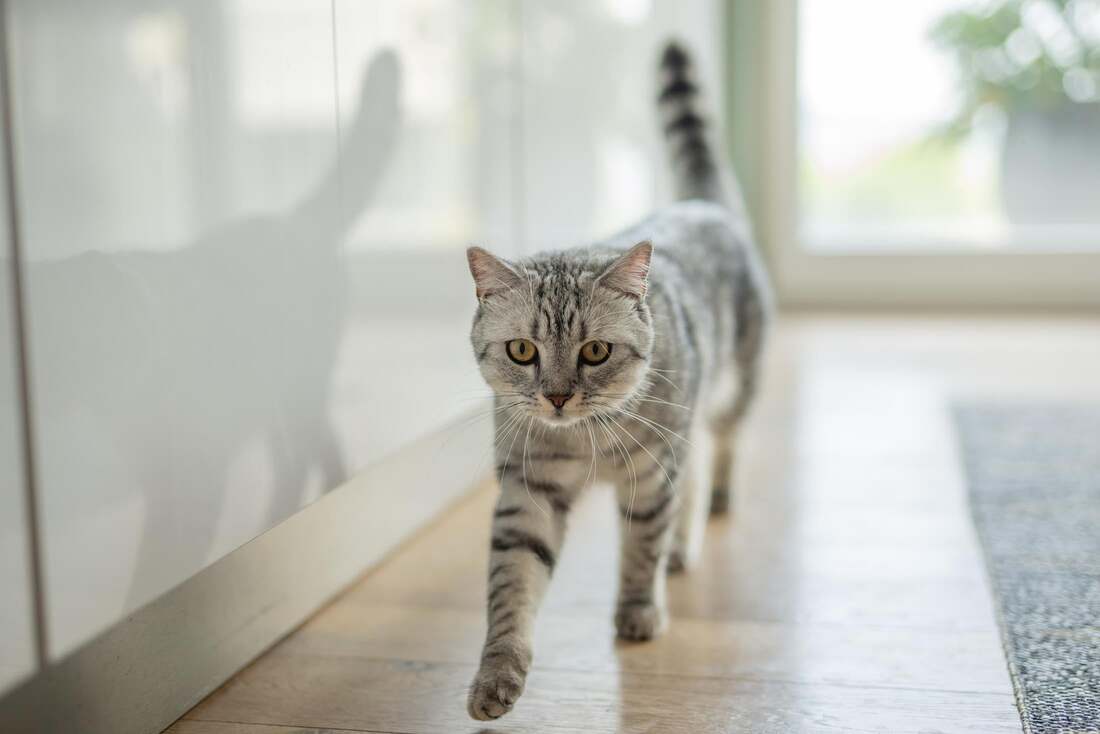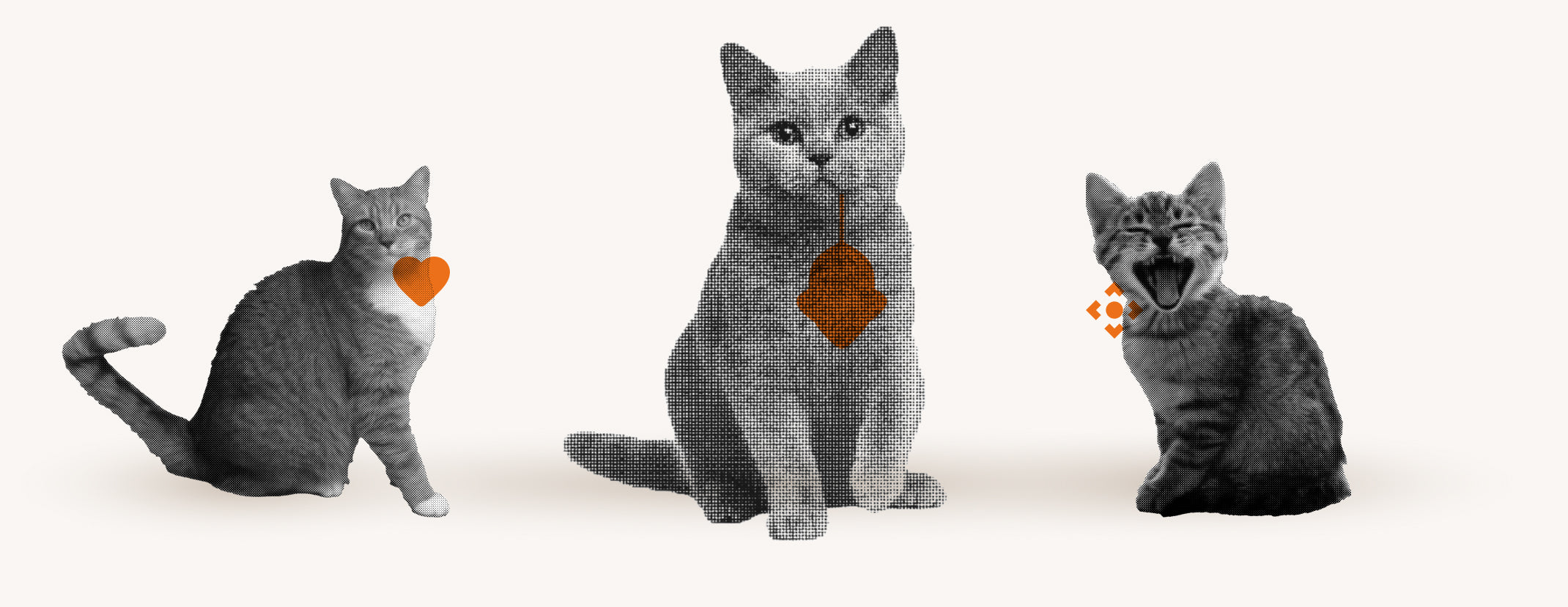Have you ever watched your tomcat chase the cat around the house?
This behavior can be stressful for the cats and also for you as an owner.
Indoor cats that cannot avoid each other often experience stress and boredom, which can lead to such hunting scenarios.
In this blog, you will learn more about the causes of this behavior and find practical solutions to bring harmony into your cat household.
Play or Fight? Understanding Cat Behavior

Cats are naturally playful animals, but sometimes their play behavior can turn into serious fights. It is important to recognize the differences between play and fight to ensure your cats' well-being. Playing cats often switch roles between hunter and hunted, and their body posture is more relaxed. Their claws are usually retracted, and although they may hiss and growl, this is often part of the game. The interaction usually ends without any visible signs of stress or fear.
In contrast, a real fight between cats is characterized by some specific behaviors. The body posture is more tense, the claws are extended, and the fur may be fluffed up to appear larger and more threatening. Real fights can also be accompanied by persistent hissing, growling, and even screaming. If you notice such signs, it is important to intervene quickly to avoid injury by making a loud noise or placing an obstacle between the cats.
Mobbing among cats: identifying features and causes

Cat bullying can be difficult to detect, but there are certain signs that may indicate it. Typical characteristics of bullying include repeated stalking, blocking resources such as food or the litter box, and constantly pestering a particular cat, which becomes visibly stressed and withdrawn. This behavior can occur in a multi-cat household, especially if there are not enough places to retreat to or if the cats do not have a good personality match.
The causes of bullying among cats are varied and can be both environmental and medical. Common triggers are:
- Too few places to retreat to , which can quickly lead to tensions in a multi-cat household.
- Pain or discomfort in one of the cats, which may cause a change in their behavior and make them less tolerant of other cats.
- Poor social compatibility or too large a group of cats, which increases the risk of conflict.
It is important to recognize and address these factors in order to make the cats' coexistence more harmonious.
Relationships between cats: harmony vs. conflict
Cats are complex creatures whose relationships are influenced by many factors. It is important to recognize the signs that indicate a good or bad relationship between cats. A harmonious relationship is often characterized by relaxed behavior: the cats groom each other, share toys and sleep close to each other without any signs of discomfort. On the other hand, conflicts can be visible through various behaviors, such as persistent hissing, avoidance of contact or even physical confrontations. These signs should not be ignored, as they can indicate deeper problems in the coexistence.
To properly understand and improve relationships between cats, it is essential to identify the causes of conflict and act accordingly. Possible causes of tension can be a lack of resources, a lack of places to retreat, or simply poor social compatibility. It is important to be proactive and design the environment so that all cats feel comfortable. This includes providing sufficient feeding stations, rest areas, and toys to minimize competition and stress among cats.
Resolving conflicts: positively influencing the behavior of cats
Conflicts between cats can be effectively resolved by positively influencing their behavior. One of the first steps is to reward positive interactions between the cats. For example, if both cats sit peacefully next to each other at the window, a reward in the form of treats or petting can follow. This reinforces the positive behavior and promotes harmonious coexistence. In addition, introducing joint activities, such as playing at the same time or eating together, can help the cats associate positive experiences with each other and reduce tension.
In addition, it can be helpful to design the environment in such a way that conflicts do not arise in the first place. This includes providing enough resources such as feeding stations, litter boxes and sleeping places so that each cat has its own area. Targeted activities can also help to relieve excess energy and reduce stress. If these measures are not sufficient, it can be useful to consult a behavioral scientist who specializes in cats in order to develop individual solutions and permanently improve the cats' coexistence.
Medical Causes of Behavioral Changes in Cats
If you notice a sudden change in your cat's behavior, it could be a sign of medical problems. Various health conditions can cause behavioral changes in cats, some of which can be serious. For example, thyroid problems, such as hyperthyroidism, can lead to increased aggressiveness or hyperactivity. Painful conditions such as osteoarthritis can cause a cat to become more withdrawn or aggressive when touched. It is therefore important to see a veterinarian if your cat notices any unusual behavioral changes. The veterinarian can perform a thorough examination to determine if there are any medical problems affecting your cat's behavior. The most common medical causes of behavioral changes in cats include:
- hyperthyroidism or other hormonal disorders
- Painful diseases such as arthrosis or dental problems
- Neurological disorders that can directly affect behavior
In addition to the obvious physical illnesses, there are also more subtle medical problems that can trigger behavioral changes in cats. For example, a food allergy can cause discomfort that manifests itself in a change in behavior. Likewise, urinary tract disorders, which are common in cats, can lead to increased irritability or uncleanliness. Psychosomatic illnesses triggered by stress can also lead to a variety of behavioral problems, so it's important to not only treat the obvious symptoms, but also identify and address the underlying causes. A comprehensive medical check-up can help significantly improve your cat's quality of life while ensuring that their behavior is not negatively affected by untreated medical problems. Here are some steps your veterinarian might take:
- Conducting blood tests to check for infections or hormonal imbalances
- X-rays or ultrasound to identify internal problems
- Specialized dietary recommendations or medications to treat allergies or infections
How Flappies smart cat flap can help
Imagine being able to prevent your cat from bringing its prey into the house after a wild hunt. This is where Flappie's smart cat flap comes in. This innovative solution is equipped with a camera and artificial intelligence that can detect whether your cat is coming home alone or with prey. If your cat tries to come through the flap with a mouse or a bird, it simply stays closed. This not only prevents mess and potential health risks from the prey, but also helps control your cats' hunting behavior. The main advantages of this technology are:
- Selective access control that prevents the bringing of loot.
- Prey detection through advanced AI-assisted camera.
- Notifications via the Flappie app that alerts you when your cat tries to come home with prey.
The Flappie app also offers the ability to control the cat flap from anywhere. You will receive real-time notifications and can even watch videos of your cat trying to come into the house. This not only gives you control over your cat's behavior, but also allows you to act proactively before problems arise. Using Flappie's smart cat flap can make living with your cats much less stressful and more hygienic. Don't think too long and consider the benefits of Flappie for your home. Visit https://flappie.ch and learn more about this innovative cat flap. Some of the other benefits are:
- Remote control of the cat flap via the app.
- Videos and statistics about your cat's behavior.
- Improve hygiene in your home by preventing prey.
Frequently Asked Questions
Why does my tomcat attack my cat?
Your tomcat could attack your cat for a variety of reasons. It could be real fights triggered by stress, pain or discomfort, poor social compatibility or not enough places to retreat to. It is important to identify and address the causes in order to make the cats' coexistence more harmonious.
What to do if a tomcat bullies a cat?
If your male cat is bullying your female cat, make sure to provide plenty of places to retreat to and resources such as feeding stations and litter boxes. It is also helpful to reward positive interactions and encourage joint activities to improve the relationship between the cats. If these measures do not help, a consultation with a behaviorist may be useful.
What to do if a tomcat attacks a cat?
If your tomcat attacks the cat, it is important to intervene quickly to avoid injury. You can make a loud noise or place an obstacle between the cats. In the long term, you should identify and address the causes of the conflict by providing enough resources and places to retreat to and positively influencing behavior through rewards and shared activities.
Why do tomcats chase cats?
Male cats often chase female cats out of play, but it can also turn into serious fights. This behavior can be triggered by stress, boredom, or insufficient retreat options in the home. It is important to monitor playtimes and make sure they do not turn into aggression.





Share:
How do cats communicate? A comprehensive guide
Cat with a bird in its mouth: behavior and protective measures